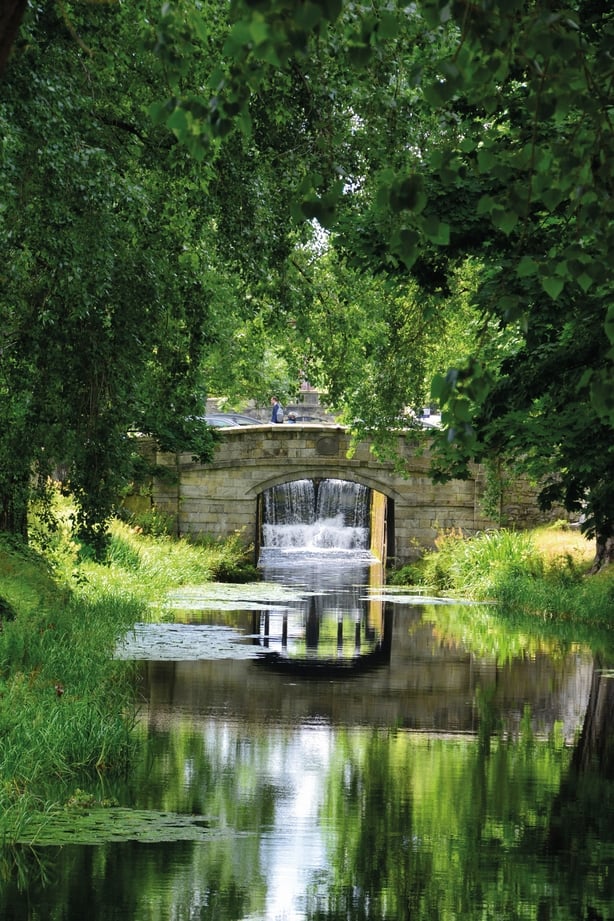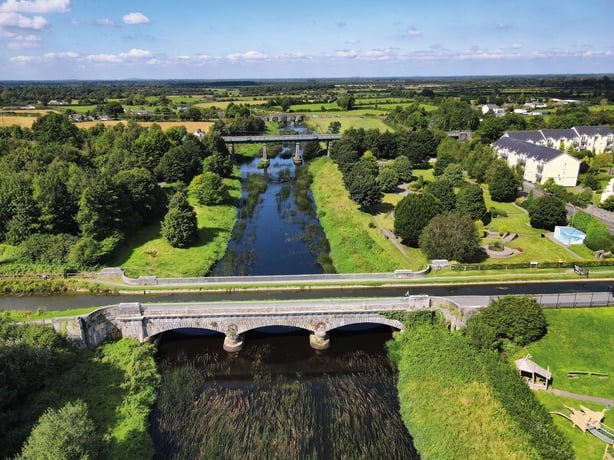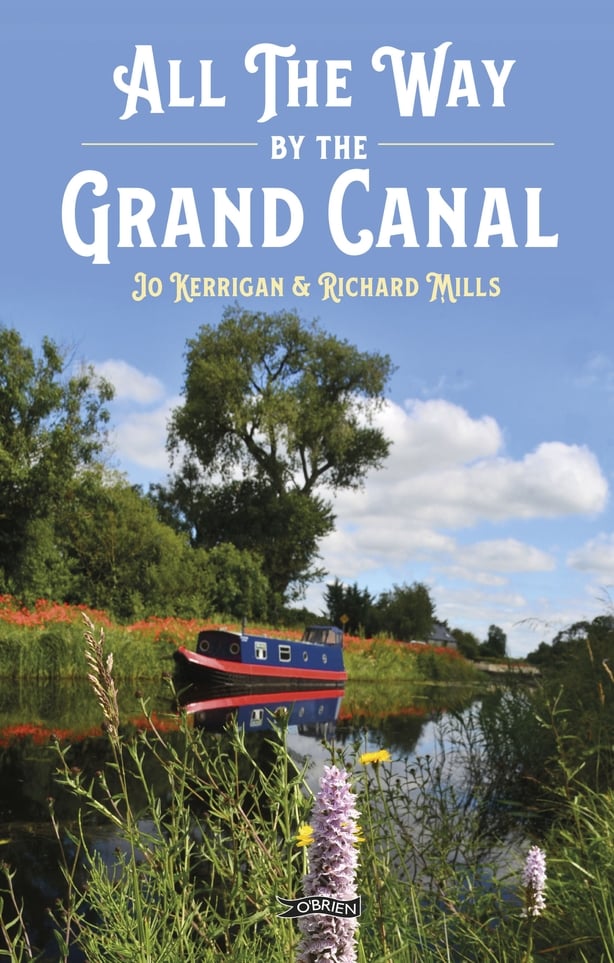In the new book All the Way By the Grand Canal, Jo Kerrigan examines the history, life and lore of the iconic Irish waterway over the centuries, illuminated by photographs from Richard Mills. Enjoy an extract below...
Ireland's Grand Canal is both an incredible inheritance and a priceless asset in our lives today. A long-distance walking and cycling way (132km, 82 miles), it stretches right across Ireland, connecting the capital city, Dublin, with the mighty Shannon and open access to the Atlantic on the west coast. It is there for all of us, at all seasons, either to stroll in sections as the mood takes us, or, for an adventurous challenge, to travel its entire length. Start at one end or the other, drop in to the towpath that is nearest to your home, or treat it as Ireland’s own camino, and walk it slowly, savouring its scenery, its wildlife, and its history.

When you travel along the Grand Canal, you are travelling through history itself, past quiet countryside that saw mighty construction works, miracles of architecture, ever-moving camps of workers. Everywhere along these banks individuals and households depended on its traffic: the barges, the goods, the people on them, which passed by in each direction every day. Commerce expanded hugely. Grain was transported from far distant fields and mills to ever-hungry, ever-demanding Dublin, as was turf, cut laboriously by hand on the central boglands and sent up to fuel thousands of city fires. Dublin in return sent out those goods, foodstuffs, fabrics, hardware, farming tools, anxiously awaited by merchants and small shopkeepers in the countryside, as well as barrels of the black drink for which Ireland is famous. Young men and women who hitherto could see no opportunities beyond the fields around them, now grasped new chances to work with the canal boats, their associated industries, or their hotels.
Arthur Guinness wasn’t precisely responsible for the Grand Canal, but he was certainly aware of its incipient arrival when he founded his family business at St James’ Gate, and knew the use he could make of it. Landowners and merchants of towns some distance from the route of the canal used all their influence (and often their own money) to have links built to connect them to this new waterway that could make all the difference to their prosperity. And people from every county touched by the project began to travel themselves.

Before the coming of the canal in the late eighteenth century, travel was for the very few. The wealthy could journey to their country estates by horse and carriage, and there were stagecoaches which connected major towns, but only for those who could afford the fare – and most couldn’t. Roads were still in a very basic state, far removed from the smooth motorways to which we are accustomed today. Often they were no more than rough, muddy trackways with deep trenches where a coach could easily be marooned for hours if not days. The majority of the population stayed, lived, worked in the place where they had been born.
Now, however, it was possible to travel from one side of the country to the other, or from a small settlement along the way to either east or west. A journey which, even for the wealthy, was pleasurable because it removed the rattling, shaking, dust and mud which were inevitable concomitants of carriage journeys. For the less well off, it was novelty, comfort, and adventure combined. To see places you had never seen before, travel through strange countryside, meet up with relatives living far away, and under safe protected conditions – this was rich experience. And it was more affordable, at 1d or 1½d per mile rather than the 3d per mile charged by coach companies. Travelling outside your own region was at last achievable.

For businesses and farming families, it made a momentous difference, since goods and produce could now be shipped easily for far further distances than before. Instead of relying on selling your crops or your wool clip, your beer or your whiskey at local markets, you could send these to Dublin where they were always in demand. Or even onward from Ringsend to the UK and further afield. It was a whole new world. The Grand Canal changed lives. Not only could people travel longer distances, get to far-off places, but in their own villages they also came into contact with those building the canal (the 'navvies’ or navigators, as they were called), got to know those who operated the barges, met travellers pausing for a night. The superb canal hotels, where a fine lady and gentleman might disembark to stay, also offered rich opportunities for new forms of employment among local residents, as did the busy quaysides themselves. Catering for the demands and whims of wealthy travellers meant the hotels had to maintain a large staff of cooks, waiters, chambermaids, laundresses, and boot boys, as well as arranging reliable sources of quality foodstuffs. On the quays, clerks were needed to sell tickets, register packages and parcels for onward transport, and record goods brought to be kept in the spacious storehouses alongside. Ostlers, farriers, stableboys were required to care for the horses that drew the boats, since these were changed at regular distances along the canal’s route. And that meant supplies of hay, oats, straw too, to be purchased locally. Even small boys could earn pennies for carrying bags of hotel guests to and from their accommodation. The coming of the Grand Canal made quite a difference to everyday life.
Walking this great long-distance pathway, you are following in the footsteps of those who went before, and indeed the hoofprints of plodding horses patiently towing the barges from one stop to the next. Check the arches under every bridge that you come to, and see if you can find the deeply-etched grooves where tow ropes grated against the stone and wore it away over decades. Watch for the ruined storehouses where grain and turf and other desirable goods were kept under lock and key until the next boat for Dublin came along. See the lock-keepers’ cottages, sometimes renovated and brightly painted, sometimes in overgrown ruins. This was where a man and his family lived, employed to open and shut the lock gates, collect tolls where necessary, keep law and order if required (and it often was!). Look for the ivy-covered larger buildings near locks that once echoed to the clop of hooves and the soothing voices of ostlers leading in tired horses for a rest and bringing out fresh hoof-power to take the barge to its next stop.

All the Way By the Grand Canal is published by the O'Brien Press

